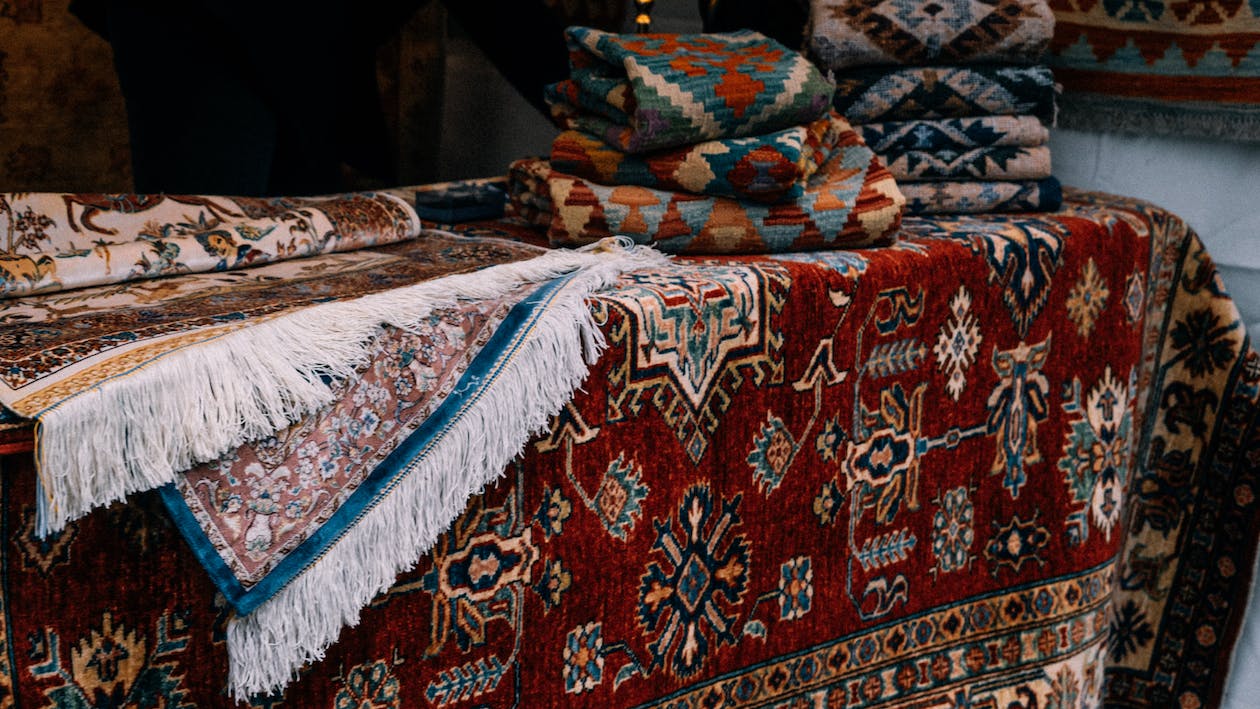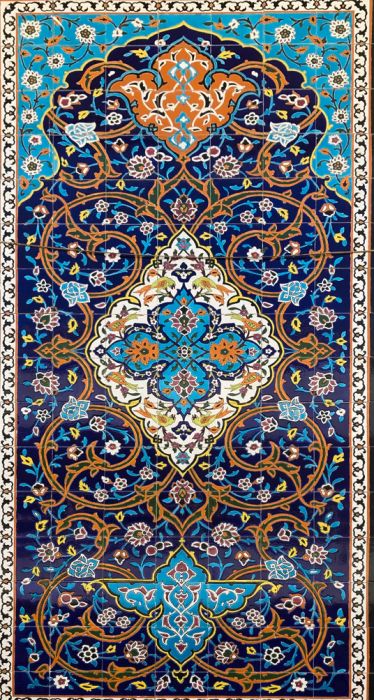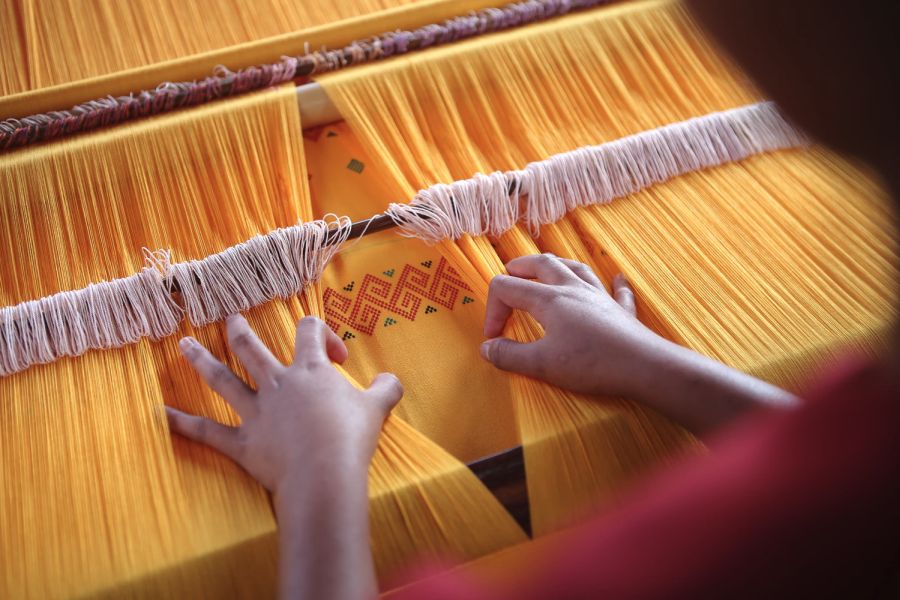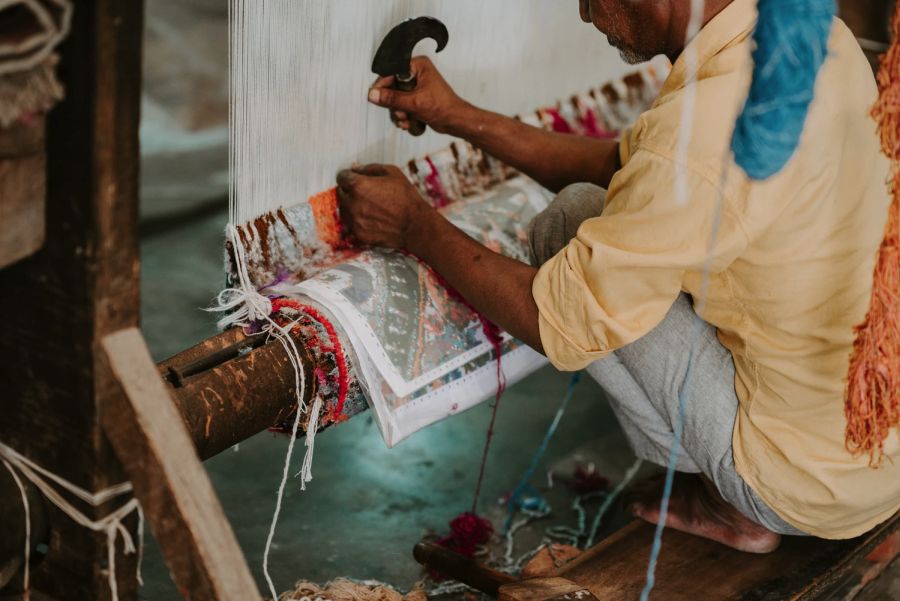The Craftsmanship of Persian Rugs
Persian rugs are a work of art. These rugs, also known as Iranian carpets, are a distinct part of Persian culture. Authentic Persian rugs are produced in Iran or Turkey, and it takes years to master the expertise required in the making of hand-knotted carpets. The artisans in Iran are immensely skilled at this craft, which is why they can produce intricate and extremely detailed rugs with pre-eminent precision.
Persian rugs are produced using an ancient art knotting technique; hence they are considered one of the most high-quality rugs. They have been the best-selling rugs on the market for centuries due to their unique design, bold floral or geometric patterns, and bright weaves. The techniques used in Persian rug weaving are sometimes done entirely by hand.
Foundation of Persian Rugs
The process of weaving involves interlacing threads to create a textile. It is mostly done on a wooden frame known as a loom, which holds the threads required to make the textile. The width of the loom determines the size of the Iranian carpet. The two basic types of threads are warp and weft. Warp threads are held vertically on the loom, and weft threads are interlaced with them horizontally. In the form of knots, the weaver ties the weft along the warp foundation to create patterns.
The rug’s patterns or designs are completely original or inspired by a design plate heavily influenced by Persian culture. The knots are individually tied in rows on a loom, using various colors for different patterns. After each row is completed, a new weft stand is placed to keep the knots in place. The process is very time consuming and takes several months to years to complete. The resulting rug produced is a very durable and high-quality work of art.
Persian Rug Materials
There is no doubt that Persian rugs are made with the finest materials available in the market, which includes various fibers such as cotton, silk, or wool, and dyes. Alongside these, different tools and types of knots are also incorporated. Discussed below are the various materials used in the making of handmade Persian Rugs.
Fibers
The material or fiber used in the weaving of Persian rugs is known as Pile. The nature and source of fibers for Persian rugs greatly depend on the region where it is made or the type of rug produced. The following are the types of fibers used in Persian rugs.
Wool
Wool is the most common type of fiber used in weaving handmade Persian rugs. The reason for using wool is because it is extremely soft and durable. Wool is easily available to the people in Iran. Tribal people also use camel or goat wool, but not a lot, making these rugs quite exclusive. Wool carpets have a nice sheen or tint to them, but they cannot be dyed. They don’t hold the color for a long time.
The most high-quality wool in Iran comes from high altitude areas or mountainous regions. The Kork or Kurk wool is of excellent quality because it is shaved from under the belly and shoulders of the sheep. Wool is often used in an amalgamation with silk.
Silk

Making silk rugs require a strong attention to intricate detail. Artisans usually merge silk with other materials to bring out more detail in the rug’s design. It is important to know that silk rugs should always be taken to a professional rug specialist for cleaning.
Cotton
Cotton is an accessible material. It is very strong and durable, which is why it is used as a base for many Persian rugs. Cotton is also used to highlight patterns with white details in many rugs; it creates a nice contrast and gives character to the rug.
Dyes
Before the weaving process, wool and silk fibers are often dyed to give color to the rug. There are many kinds of dye available in the market. Color adds dimension and depth to the art and makes it stand out more. There are many views of people regarding carpet dyes, but the type of dye used greatly depends on the final look the craftsmen want to achieve.
Natural Dyes
Natural dyes extracted from plants and vegetables are used to give rugs a more muted color. They are beautiful and tend to last longer than most chemical dyes. Indigo is extracted from indigo plant blossom, and it constitutes all shades of blue. Similarly, various colors are added to an indigo base to create more colors, such as saffron mixed with indigo makes green.
A long fermentation process takes place before the wool is soaked into the dye. It is dried and used afterward. Another common natural dye is madder; it is produced by boiling madder plants in water until it releases the red dye. There are no sources of natural green dyes; wool has to be dyed more than once to achieve green color; this might look patchy.
Chrome Dyes
Chrome dyes became popular in the Persian Empire during the 19th century. These dyes were produced by a compound called aniline. Natural dyes are not very pigmented and tend to fade easily; this is the sole reason why chrome dyes gained popularity. During early times the use of chrome dyes was banned because of their toxicity. But during World War II, more stable chrome dyes were produced, and they were available in a variety of bright shades.
Tools
Comb
A comb is a tool, which resembles a brush with hard bristles. It is mainly used to slide down the weft thread between the rows of tied knots. This secures the knots in place and helps to create a strong weave.
Hook
The hook resembles a knife and is very narrow on the tip. The craftsmen use the sharp pointed tip to separate the warp threads while tying a knot to pass through the weft threads. The flat edge is used to cut the excess thread after tying the knot.
Spindle
It is a rough rod of short length, which is used to roll natural fiber into yarn. Mary Maxim has quality yarns you can use for your next DIY project.
Scissor
The scissor used in carpet weaving is very different from our normal scissors. They are heavy-duty and used to clean off the edges of the uneven thread while the carpet is being woven.
Design Plate
It is a grid paper that has the carpet design drawn onto it. It is used as a design and color reference while weaving the rug. Weavers or artists draw design plates.
Looms
A loom is used to hold the rug together while it is being woven. The types of looms used greatly depend on the frame’s size and the region where the textile is formed. The different types of looms are as follows:
Horizontal Loom
The horizontal loom is undoubtedly the easiest loom to weave textiles on. These looms are largely used by traveling artists, as it is easy to dismantle and travel with. They also come in small, compact sizes, which is why only small-sized textiles can be produced on a horizontal loom. This loom is made up of a wooden frame with four bars. The distance between the bars of the frame is often adjustable, depending on the rug’s size.
The frame of the horizontal loom can be fixed to the ground using nails. The warp threads are secured from the top to the bottom of the frame, usually very close to the ground. The weavers sit on the woven part of the rug and add more knots to the unwoven part.
Vertical Loom
The vertical loom is popularly used in village workshops. However, it is not widely used because it is challenging to assemble. This loom consists of four bars, two on the side and two horizontally placed, one on the top, the other on the bottom. The whole frame together stands tall, and the warp threads are arranged from top to bottom. These looms are ideal for intricate designs, which require a lot of details.
The three different types of vertical looms are as follows.
Fixed Loom
The fixed loom is used in many commercial centers of Turkey. In this loom, the weaver is settled on an adjustable moving seat in front of the loom. The seat is raised or lowered as the knots are added during weaving.
Tabriz Loom
The Tabriz loom is also known as the Bunyan loom. In this loom, the warp threads are weaved around the top and bottom bars, interlaced from the behind, and are not completely secured in one place. As the threads are weaved, one after another, the loose woven section is pulled down and tucked behind the loom. This makes it easy for the craftsman, as they don’t have to move as much.
Tabriz loom is used in Iran, particularly in Azerbaijan, Arak, Qum, and Hamadan.
Roller Bean Loom
The roller beam loom is mainly used for large size rugs due to its massive frame size. The working of this loom involves rolling the woven part of the rug around the lower beam. This particular loom is used for coarse weaving and broad patterns. The roller bean loom can be found in many small villages in Turkey and Iran.
Making Persian Rugs is Indeed an Art
Persian rugs have a long, rich history. Although the process of making a Persian carpet or rug has been simplified a lot due to today’s advanced tools and working environment, making one still requires a lot of dedication, time, and effort.







